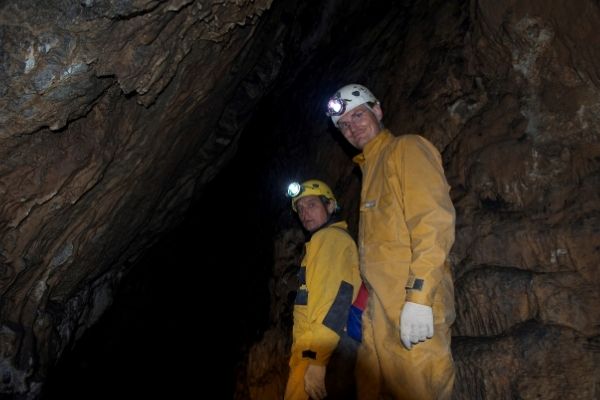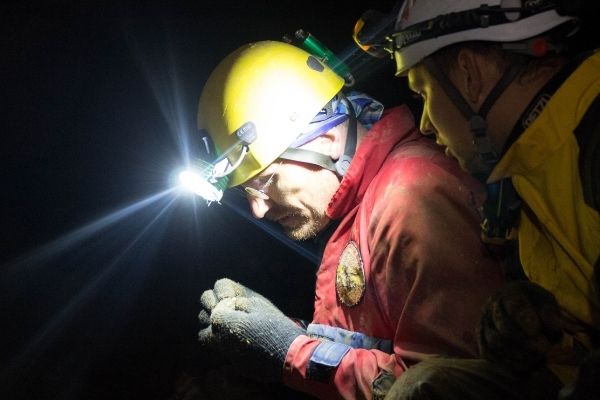-
Study
-
Quick Links
- Open Days & Events
- Real-World Learning
- Unlock Your Potential
- Tuition Fees, Funding & Scholarships
- Real World Learning
-
Undergraduate
- Application Guides
- UCAS Exhibitions
- Extended Degrees
- School & College Outreach
- Information for Parents
-
Postgraduate
- Application Guide
- Postgraduate Research Degrees
- Flexible Learning
- Change Direction
- Register your Interest
-
Student Life
- Students' Union
- The Hub - Student Blog
- Accommodation
- Northumbria Sport
- Support for Students
-
Learning Experience
- Real-World Learning
- Research-enriched learning
- Graduate Futures
- The Business Clinic
- Study Abroad
-
-
International
International
Northumbria’s global footprint touches every continent across the world, through our global partnerships across 17 institutions in 10 countries, to our 277,000 strong alumni community and 150 recruitment partners – we prepare our students for the challenges of tomorrow. Discover more about how to join Northumbria’s global family or our partnerships.
View our Global Footprint-
Quick Links
- Course Search
- Undergraduate Study
- Postgraduate Study
- Information for Parents
- London Campus
- Northumbria Pathway
- Cost of Living
- Sign up for Information
-
International Students
- Information for International Students
- Northumbria and your Country
- International Events
- Application Guide
- Entry Requirements and Education Country Agents
- Global Offices and Regional Teams
- English Requirements
- English Language Centre
- International student support
- Cost of Living
-
International Fees and Funding
- International Undergraduate Fees
- International Undergraduate Funding
- International Masters Fees
- International Masters Funding
- International Postgraduate Research Fees
- International Postgraduate Research Funding
- Useful Financial Information
-
International Partners
- Agent and Representatives Network
- Global Partnerships
- Global Community
-
International Mobility
- Study Abroad
- Information for Incoming Exchange Students
-
-
Business
Business
The world is changing faster than ever before. The future is there to be won by organisations who find ways to turn today's possibilities into tomorrows competitive edge. In a connected world, collaboration can be the key to success.
More on our Business Services-
Business Quick Links
- Contact Us
- Business Events
- Research and Consultancy
- Education and Training
- Workforce Development Courses
- Join our mailing list
-
Education and Training
- Higher and Degree Apprenticeships
- Continuing Professional Development
- Apprenticeship Fees & Funding
- Apprenticeship FAQs
- How to Develop an Apprentice
- Apprenticeship Vacancies
- Enquire Now
-
Research and Consultancy
- Space
- Energy
- AI and Tech
- CHASE: Centre for Health and Social Equity
- NESST
-
-
Research
Research
Northumbria is a research-rich, business-focused, professional university with a global reputation for academic quality. We conduct ground-breaking research that is responsive to the science & technology, health & well being, economic and social and arts & cultural needs for the communities
Discover more about our Research-
Quick Links
- Research Peaks of Excellence
- Academic Departments
- Research Staff
- Postgraduate Research Studentships
- Research Events
-
Research at Northumbria
- Interdisciplinary Research Themes
- Research Impact
- REF
- Partners and Collaborators
-
Support for Researchers
- Research and Innovation Services Staff
- Researcher Development and Training
- Ethics, Integrity, and Trusted Research
- University Library
- Vice Chancellors Fellows
-
Research Degrees
- Postgraduate Research Overview
- Doctoral Training Partnerships and Centres
- Academic Departments
-
Research Culture
- Research Culture
- Research Culture Action Plan
- Concordats and Commitments
-
-
About Us
-
About Northumbria
- Our Strategy
- Our Staff
- Our Schools
- Place and Partnerships
- Leadership & Governance
- University Services
- Northumbria History
- Contact us
- Online Shop
-
-
Alumni
Alumni
Northumbria University is renowned for the calibre of its business-ready graduates. Our alumni network has over 253,000 graduates based in 178 countries worldwide in a range of sectors, our alumni are making a real impact on the world.
Our Alumni - Work For Us
Northumbria University is to play a leading role in a major study to assess the long-term impact of global warming on Siberia’s thawing permafrost.
Permafrost is frozen ground that stores vast amounts of fossil carbon. Given that permafrost holds twice as much carbon as the atmosphere, and that almost a quarter of the Northern Hemisphere is covered in permafrost, this frozen land plays an essential role in stabilizing climate change.
Thawing permafrost is considered one of the key climate tipping elements that would lead to long-term irreversible changes to global climate. However, today’s warming global temperatures mean permafrost is beginning to thaw and release greenhouse gases into the atmosphere.
Northumbria University is home to a team of world-leading academics specialising in reconstructing climate and environmental changes through the millennia. They have been awarded a Leverhulme Trust Research Project Grant of £489,000 to reconstruct Siberia’s climate over the past 500 to 800 thousand years and estimate the long-term fate of Siberia’s permafrost under today’s rising temperatures.
The researchers will work in partnership with experts from Germany’s Alfred Wegener Institute Helmholtz Centre for Polar and Marine Research (AWI) in Potsdam,
A record high of 38 degrees was reported in Eastern Siberia in June 2020. This led to an unprecedented number of wildfires in the region, releasing further carbon into the atmosphere. The links between wildfire and permafrost stability are complex, but evidence suggests that permafrost thaw and degradation has tripled in recent years in response to more and hotter fires.
The four-year study will assess how Siberia’s permafrost expanded and contracted in response to the changing climates of the past, and the role of the cold glacial and warmer interglacial periods.
The study will be the first to collectively combine the archives of permafrost ice, cave deposits and crustacean fossils to reconstruct past temperatures and regional climate histories. Previous studies have only examined these archives individually.
Permafrost ice originates from, and preserves, atmospheric precipitation, meaning it holds records of winter and summer temperatures. The composition of the ancient permafrost ice samples will allow the researchers to decipher the climate conditions at the time the ice formed. In a similar vein, cave deposits can inform on the long-term mean temperature changes, and crustacean fossils tell the story of the summer temperature, each containing an important climate archive.

The researchers hope the holistic view obtained by combining findings from each of these archives will give new insights into how temperatures changed, which can help to reveal seasonality changes in the past.
The team have found several sites which they describe as having great promise to provide them with the important samples and data they need from caves, ice and lake deposits.
They will use tiny shallow lakes and permafrost ice from the Arctic seaboard, from the Batagay Megaslump and the Mamontova Gora site in Central Yakutia; the Botovskaya Cave in southern Siberia; and the so far unstudied Kirensk Karst region, more than 500 miles northeast of Lake Baikal.
Caves hold crucial evidence of past environmental conditions. Carbonate formations known as speleothems can only grow when water flows into the cave from the soil above. As in permafrost all water is frozen, this means speleothems could only have grown at a time when the climate was warmer and the land above the cave was not frozen.
The fossils of tiny shrimp-like creatures, known as ostracods, also hold much promise for the research team. At just 0.5 to 2 mm in size, ostracods only live for a few months in summer and build a carbonate shell similar to mussels. The fossilised carbonate shells from shallow ponds in the permafrost region will provide researchers with an archive of data on the temperatures at the time they were formed.
Thanks to a recent investment in a mass spectrometry lab in the Department of Geography and Environmental Sciences at Northumbria, the researchers will use a method known as clumped isotope geothermometry to extract details on the isotopic composition of the fossilised carbonate shells and reconstruct northern Siberia’s summer temperatures across the millennia. Similarly, the team will use speleothems to explore the long-term temperature development during interglacial periods.
Dr Sebastian Breitenbach, Vice-Chancellor’s Senior Fellow in Northumbria University’s Department of Geography and Environmental Sciences said: “The Siberian permafrost formed mainly, but not exclusively, during cold periods, known as ice ages or glacials, in the last two million years, while at least some of the permafrost thawed during warm stages, known as interglacials.
“If we look at temperatures in Siberia today, we see that they vary by up to 90 degrees across the year, from -60 in winter up to approximately 30 degrees in summer. However, we need to see this seasonal amplitude in proxy. Was the change in temperature always the same as we know it today, or was it different in the past? How much warmer were past summers, how different the winters?
“We know that the way permafrost responds to climate change and long-term climate controls appears to be more complex than simply reacting to warmer or colder temperatures. We therefore believe that if we can provide evidence on the interplay of temperature and precipitation on a seasonal scale, we can answer the crucial question of whether past permafrost formation and degradation can be attributed to specific climate conditions or seasonality patterns.
“This study will enable us to reconstruct climate conditions and hopefully create a new understanding of whether the past formation, and especially degradation, of permafrost can be attributed to specific temperatures or seasonality patterns.”

Dr Hanno Meyer, Head of the Stable Isotope Facility at AWI Potsdam and expert for isotope-based permafrost palaeoclimatology said: “The combination of multiple isotope signals from several climate archives across East Siberia offers an exciting possibility to unravel past climate dynamics on different temporal and spatial scales for both glacials and interglacials.
“Combining this palaeoclimate information with geological evidence of permafrost formation, stability or degradation will help us to identify potential thresholds in different climate parameters that were responsible for the response of the permafrost system to past climate changes. This knowledge will help us to estimate the future effects of Global Warming on the permafrost in East Siberia and the consequences for local communities as well as the feedback mechanism to the global climate system.”
Dr Breitenbach added: “With the installation of our new mass spectrometry lab, Northumbria becomes one of just four universities in England to be able to undertake the detailed clumped isotopic tests required to reconstruct these temperature conditions. We are very excited to begin to use our new equipment and establish Northumbria as a leading centre for geothermometry and carbonate research.”
Northumbria University is renowned for undertaking research into modern and ancient environments. The University’s Cold and Palaeo Environments group is focused on research into past climates and environments, and ice, snow and permafrost.
The Alfred Wegener Institute Helmholtz Centre for Polar and Marine Research in Potsdam has a long-standing expertise in studying past and modern permafrost environments in Siberia.
News
- First cohort of Civil Engineering Degree Apprentices graduate from Northumbria
- Venice Biennale Fellowship
- Northumbria expands results day support for students
- Northumbria academic recognised in the British Forces in Business Awards 2025
- £1.2m grant extends research into the benefits of breast milk for premature babies
- Northumbria graduate entrepreneur takes the AI industry by storm
- Study identifies attitudes towards personal data processing for national security
- Lifetime Brands brings student design concept to life
- New study reveals Arabia’s ‘green past’ over the last 8 million years
- How evaluation can reform health and social care services
- Researchers embark on a project to further explore the experiences of children from military families
- Northumbria University's pioneering event series returns with insights on experiential and simulated learning
- Support for doctoral students to explore the experiences of women who have been in prison
- Funding boost to transform breastfeeding education and practice
- A new brand of coffee culture takes hold in the North East
- BBRSC awards £6m of funding for North East Bioscience Doctoral Students
- £3m funding to evaluate health and social care improvements
- Balfour Beatty apprentices graduate from Northumbria University
- Long COVID research team wins global award
- Northumbria researchers lead discussions at NIHR event on multiple and complex needs
- Healthcare training facility opens to support delivery of new T-level course
- Young people praise Northumbria University for delivery of HAF Plus pilot
- Nursing academics co-produce new play with Alphabetti Theatre
- Research project to explore the experiences of young people from military families
- Academy of Social Sciences welcomes two Northumbria Professors to its Fellowship
- Northumbria University set to host the Royal College of Nursings International Nursing Research Conference 2024
- 2.5m Award Funds Project To Encourage More People Into Health Research Careers
- Advice available for students ahead of A-level results day
- Teaching excellence recognised with two national awards
- Northumbria law student crowned first Apprentice of the Year for the region
- Northumbria University launches summer activities to support delivery of Holiday Activities and Food programme
- UK health leader receives honorary degree from Northumbria University
- Use of AI in diabetes education achieves national recognition
- Research animation explores first-hand experiences of receiving online support for eating disorders
- Careers event supports graduate employment opportunities
- Northumbria University announces £50m space skills, research and development centre set to transform the UK space industry
- The American Academy of Nursing honours Northumbria Professor with fellowship
- New report calls for more support for schools to improve health and wellbeing in children and young people
- AI experts explore the ethical use of video technology to support patients at risk of falls
- British Council Fellows selected from Northumbria University for Venice Biennale
- Prestigious nomination for Northumbria cyber security students
- Aspiring Architect wins prestigious industry awards
- Lottery funding announced to support mental health through creative education
- Early intervention can reduce food insecurity among military veterans
- Researching ethical review to support Responsible AI in Policing
- Northumbria named Best Design School at showcase New York Show
- North East universities working together
- Polar ice sheet melting records have toppled during the past decade
- Beyond Sustainability
- Brewing success: research reveals pandemic key learnings for future growth in craft beer industry
- City's universities among UK best
- Famous faces prepare to take to the stage to bring a research-based performance to life
- Insights into British and other immigrant sailors in the US Navy
- International appointment for law academic
- Lockdown hobby inspires award-winning business launch for Northumbria student
- Lasting tribute to Newcastle’s original feminist
- Outstanding service of Northumbria Professor recognised with international award
- Northumbria academics support teenagers to take the lead in wellbeing research
- Northumbria University becomes UK's first home of world-leading spectrometer
- Northumbria's Vice-Chancellor and Chief Executive to step down
- Out of this world experience for budding space scientists
- Northumbria engineering graduate named as one of the top 50 women in the industry
- Northumbria University signs up to sustainable fashion pledge
- Northumbria demonstrates commitment to mental health by joining Mental Health Charter Programme
- Virtual reality tool that helps people to assess household carbon emissions to go on display at COP26
- EXPERT COMMENT: Why thieves using e-scooters are targeting farms to steal £3,000 quad bikes, and what farmers can do to prevent it
- Exhibition of lecturer’s woodwork will help visitors reimagine Roman life along Hadrian’s Wall
- Students reimagine food economy at international Biodesign Challenge Summit
- Northumbria storms Blackboard Catalyst Awards
- Breaking news: Northumbria’s Spring/Summer Newspaper is here!
- UK’s first ever nursing degree apprentices graduate and join the frontline
- Massive decrease in fruit and vegetable intake reported by children receiving free school meals following lockdown
- Northumbria awards honorary degrees at University’s latest congregations
Geography At Northumbria University Encompasses All Of Our Work In Physical And Human Geography, Environmental Science And Management, Health & Safety, And Disaster Management.
This is the place to find all the latest news releases, feature articles, expert comment, and video and audio clips from Northumbria University
Latest News and Features

Report calls on the UK banking industry to consider interventions that "design out" economic abuse
Researchers have published the findings of a ground-breaking study which brought together victim-survivors…
.png?modified=20251222122622)
Northumbria's ‘Banana Split: Unpeeling a New Energy Source’ project highly commended at prestigious Green Gown Awards
A Northumbria University research project has been highly commended at the 2025 Green Gown…

Northumbria ranked most sustainable university in the North East for fifth consecutive year
Northumbria University has been rated as ‘1st class’ for sustainability and is once again the…

Northumbria expert delivers training to help address victim-blaming language
A Northumbria University academic is leading pioneering training to support police forces across…

Northumbria University launches national AI challenge inviting young people to imagine a hopeful future
Northumbria University has launched the Hopeful Futures AI Challenge, a groundbreaking national…

Student volunteering partnership expands following five years of community impact
Following the success of a Law in the Community project, Northumbria University is expanding…

Funding awarded for innovative space technology projects
The North East Space Communications Accelerator (NESCA) has successfully awarded its first…

First cohort of Civil Engineering Degree Apprentices graduate from Northumbria
The inaugural cohort of Civil Engineering degree apprentices have graduated from Northumbria…
Upcoming events

Collaborating for Capability: Shaping the Future of Supply Chain Talent
City Campus East, Northumbria University CCE1-403
-

Archives to Action: Historical Evidence for Policy Reform
Virtual Workshop
-

Viruses of Microbes-UK (VoM-UK) Conference 2026
Northumbria University

Commercialising SHAPE Innovations and Impact
Northumbria University
-


